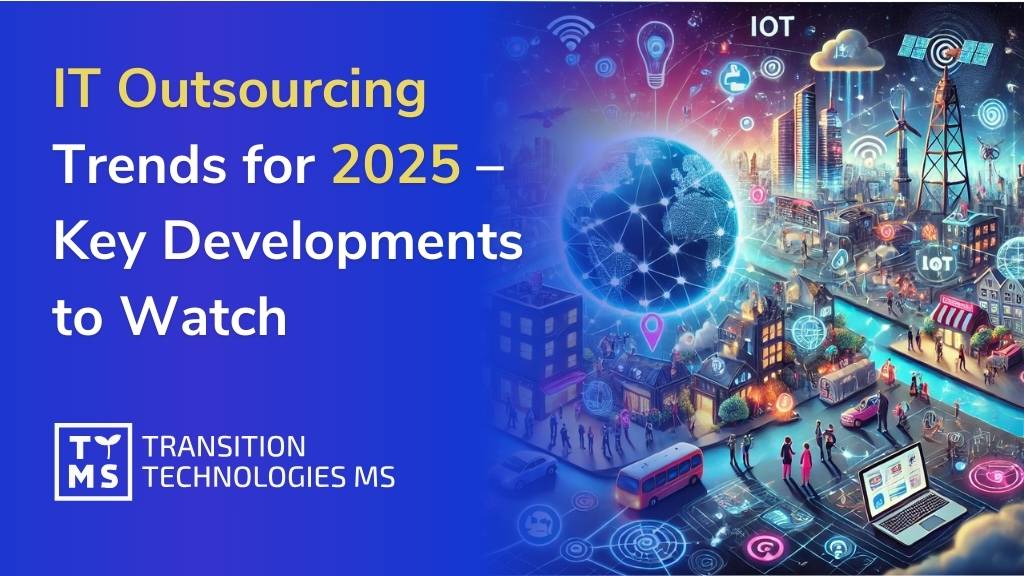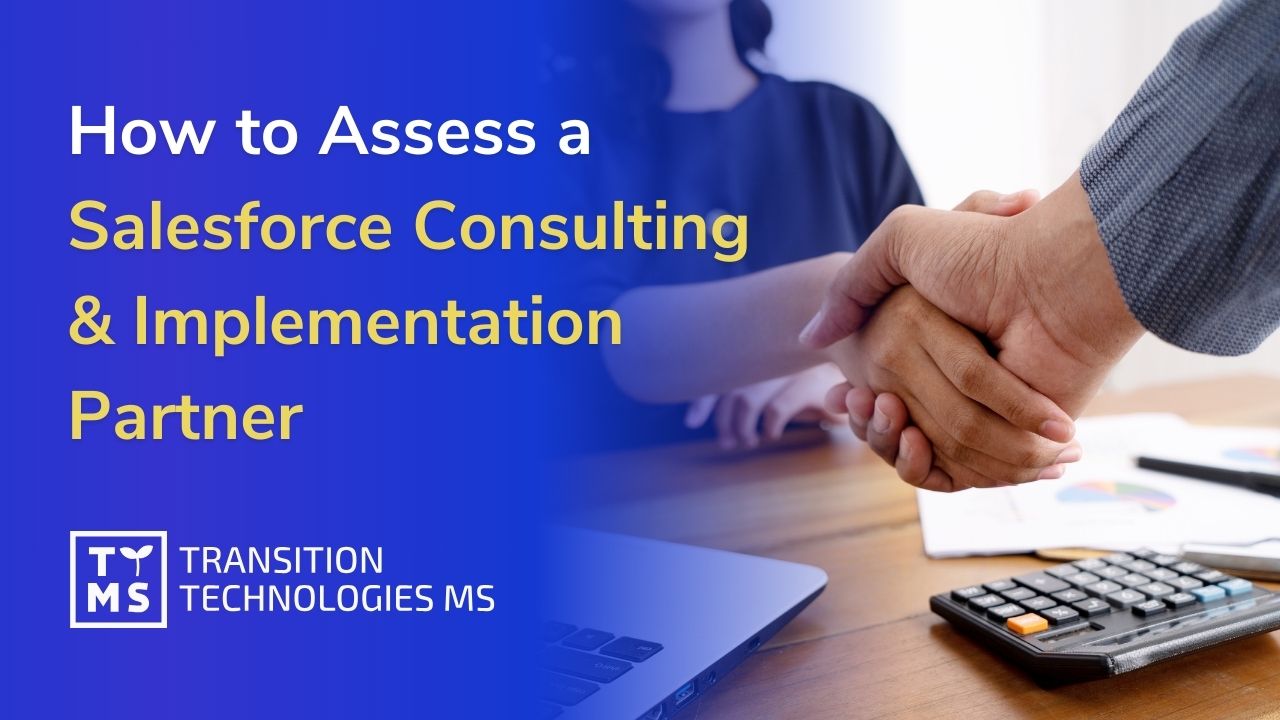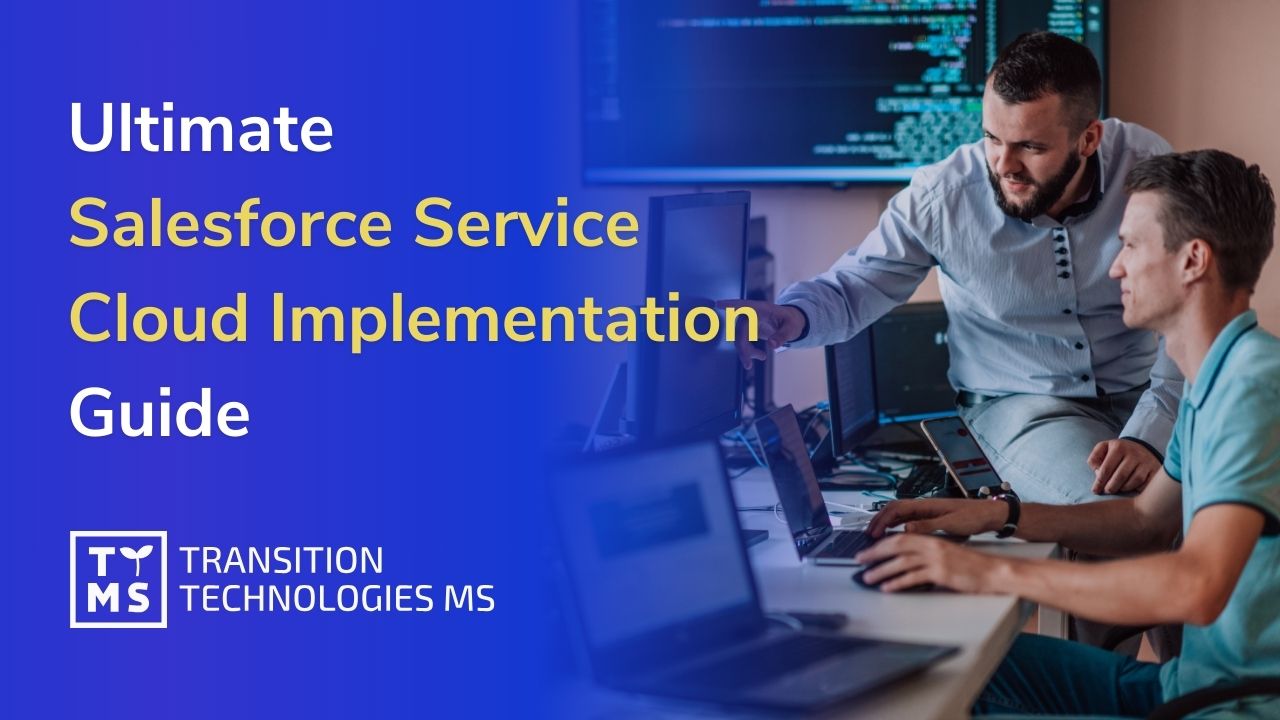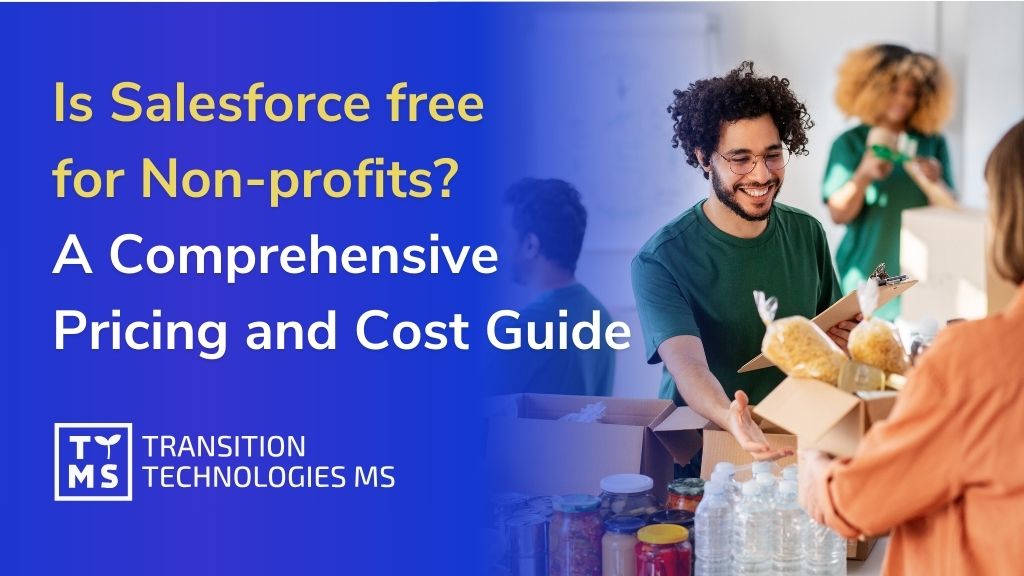Sort by topics
IT Outsourcing Trends for 2025 – Key Developments to Watch
In 2025, IT outsourcing will be a vital component in the strategic development of large enterprises across industries like pharmaceuticals, automotive, education, and finance. Understanding the latest technology outsourcing trends will enable these companies to compete effectively in their respective markets, accelerate innovation, and optimize business operations. Below, we highlight the most important IT outsourcing trends to adopt now. 1. IT Outsourcing Trends – Key Directions for 2025 1.1 Expansion of Strategic Partnerships In 2025, IT outsourcing will evolve beyond mere cost reduction and task delegation. Companies will increasingly form long-term strategic partnerships with IT service providers actively involved in shaping business strategies. Such partnerships allow deeper integration within organizational structures, shared business goals, and exchange of expertise, fostering accelerated innovation and product development. 1.2 Innovation-Oriented Outsourcing By 2025, IT outsourcing trends will heavily emphasize innovation, particularly in the implementation of advanced technologies, including: Artificial Intelligence (AI), for process automation, predictive analytics, and advanced customer relationship management. Blockchain, enhancing process transparency and secure transaction management. Internet of Things (IoT), enabling intelligent asset management, production monitoring, and logistics optimization. Outsourcing providers will serve as technology integrators, helping businesses rapidly implement these technologies tailored specifically to their business needs. 1.3 Nearshoring and Reshoring Gaining Popularity Due to geopolitical instability and the necessity for uninterrupted business continuity, companies will increasingly prefer IT outsourcing providers geographically closer to their primary markets. Nearshoring ensures effective communication, collaboration within the same time zone, and high-quality services due to better understanding of local market specifics and culture. Western European companies, for instance, are increasingly partnering with providers in Poland, the Czech Republic, Romania, and Bulgaria. 1.4 AI-Driven Digital Transformation In 2025, IT outsourcing will center on digital transformation projects leveraging advanced AI solutions, machine learning, and robotic process automation (RPA). Outsourcing providers, such as Transition Technologies MS (TTMS), will support clients in: Big data analytics for informed decision-making. Implementation of intelligent chatbots and customer support systems. Automation of repetitive business processes for enhanced operational efficiency. 1.5 Data Security – A Top Priority Growing cybersecurity threats make data security a decisive factor in choosing outsourcing providers. Companies following IT offshoring trends and outsourcing must comply with stringent regulations (GDPR, NIS2) and offer comprehensive data protection strategies, including: Development of Security Operations Centers (SOC) for monitoring and rapid incident response. Advanced protection against ransomware and phishing attacks. Implementation of Zero Trust systems to minimize unauthorized access risks. 1.6 Hybrid Model and Cloud Computing Companies increasingly adopt hybrid working models, integrating internal teams with external cloud-based specialists. Cloud computing enables easier scalability, faster project deployments, and better IT resource management. Infrastructure as a Service (IaaS) and Platform as a Service (PaaS) are becoming popular, offering flexibility and responsiveness to changing market conditions, as indicated by current trends in outsourcing. 1.7 Sustainability and Responsible Practices Environmental, Social, and Governance (ESG) factors will significantly influence outsourcing decisions. Following outsourcing trends 2025, outsourcing companies will need to demonstrate their ESG strategies and tangible ecological actions. For example, Transition Technologies MS (TTMS) implements a sustainable development policy, focusing on reducing CO2 emissions, efficient energy management, promoting eco-friendly practices among employees, and supporting social and educational environmental initiatives. 2. IT Outsourcing at Transition Technologies MS (TTMS) Transition Technologies MS provides comprehensive IT outsourcing services tailored to clients’ unique needs. Our cooperation models include Staff Augmentation, Team Delivery, and Managed Services. We uphold the highest security standards, confirmed by ISO 27001:2022 and ISO 14001 certifications. We offer flexibility, rapid recruitment of top specialists, and effective team management. We invite businesses looking for sustainable, innovative, and secure IT solutions to partner with us. Contact us now. FAQ What is the difference between nearshoring and reshoring in IT outsourcing? Nearshoring involves partnering with IT providers located geographically close to your business, often in neighboring or regional countries, to ensure better collaboration, cultural alignment, and communication. Reshoring refers to bringing outsourced IT services back to your home country, typically driven by concerns over geopolitical stability, security, or quality control. Why is innovation-oriented outsourcing crucial for enterprises in 2025? Innovation-oriented outsourcing enables companies to rapidly adopt advanced technologies such as Artificial Intelligence, Blockchain, and IoT, without extensive internal investment. Providers specialized in innovation accelerate product development, streamline business processes, and ensure companies remain competitive and responsive to market changes. What is the Zero Trust model in the context of IT outsourcing and why does it matter? The Zero Trust model is a cybersecurity approach that assumes no internal or external user can be trusted by default, requiring continuous authentication and verification for access to resources. In IT outsourcing, this strategy significantly reduces vulnerabilities, prevents unauthorized access, and provides stronger protection against ransomware and phishing attacks. How can outsourcing providers help enterprises achieve sustainability goals? IT outsourcing providers contribute to sustainability goals by implementing environmentally responsible practices such as energy-efficient data centers, reducing carbon footprints, and promoting sustainable operational models. Providers like TTMS incorporate ESG (Environmental, Social, Governance) standards to help companies align their business strategies with global sustainability initiatives. What are strategic partnerships in IT outsourcing, and how do they differ from traditional outsourcing models? Strategic partnerships in IT outsourcing involve deep, long-term collaboration where providers actively participate in shaping business strategies and share common goals with their clients. Unlike traditional outsourcing, which primarily focuses on cost reduction and task delegation, strategic partnerships prioritize joint innovation, shared risks, and integrated planning for mutual business growth.
ReadHow to Assess a Salesforce Consulting & Implementation Partner
In a world where digital business drives nearly every decision, Salesforce has become essential for managing customer relationships across countless organizations. But let’s face it—setting up and fine-tuning this powerful platform isn’t exactly a breeze. That’s where Salesforce consulting and implementation partners come into play. With the market for these services set to skyrocket from $18.3 billion in 2024 to an incredible $57 billion by 2032, how do you find the real experts among the crowd? This guide will give you the insights and strategies needed to evaluate and choose the ideal Salesforce partner, helping ensure your investment turns into genuine business success. 1. The Importance of Choosing the Right Salesforce Consulting Partner Selecting the right Salesforce consulting partner is not just a decision; it’s a strategic move that can make or break your CRM implementation. With the Salesforce consulting service market valued at $16.04 billion in 2023 and growing at a breakneck pace, the stakes are higher than ever. A well-chosen partner acts as a catalyst, transforming your Salesforce investment into a powerhouse of efficiency, customer satisfaction, and revenue growth. The right partner brings more than just technical know-how to the table. They become an extension of your team, aligning their expertise with your business goals and culture. This synergy is crucial for navigating the complex Salesforce ecosystem and tailoring solutions that fit your unique needs like a glove. Moreover, a top-notch Salesforce consulting partner can help you avoid common pitfalls that often plague CRM implementations. They bring best practices, industry insights, and a wealth of experience from diverse projects, significantly reducing the risk of costly mistakes and delays. This expertise is invaluable in ensuring a smooth rollout and faster time-to-value for your Salesforce investment. But the benefits don’t stop at implementation. A strong partner relationship continues to pay dividends long after the initial setup. They can provide ongoing support, help you stay ahead of Salesforce updates, and guide you in leveraging new features to maintain your competitive edge. In essence, choosing the right Salesforce consulting partner is not just about solving today’s challenges – it’s about future-proofing your CRM strategy for years to come. 2. Key Factors to Assess a Salesforce Consulting & Implementation Partner When evaluating potential Salesforce consulting partners and implementation partners, several crucial factors come into play. These elements will help you identify certified Salesforce partners who can deliver the best results for your organization. 2.1 Cultural and Communication Fit A successful partnership starts with alignment. The ideal Salesforce consulting partner should mesh well with your company’s culture and communication style. This compatibility ensures smoother collaboration throughout the project lifecycle. Look for partners who demonstrate: Clear and consistent communication Adaptability to your working style Shared values and business ethics Willingness to understand your unique challenges and goals Remember, you’ll be working closely with this team, so a good cultural fit can make the difference between a stressful project and a rewarding collaboration. 2.2 Technical Expertise and Certifications Technical prowess is the backbone of any successful Salesforce implementation. Salesforce partner certifications are a reliable indicator of a consultant’s expertise and commitment to excellence. When assessing potential partners, consider: The number and variety of Salesforce partner certifications held by the team Expertise across different Salesforce clouds (Sales, Service, Marketing, etc.) Experience with integrations and custom development Knowledge of the latest Salesforce features and updates Certified Salesforce partners often have a deeper understanding of the platform’s capabilities and can provide more innovative solutions to your business challenges. 2.3 Industry Experience and Solution Proficiency While general Salesforce knowledge is important, industry-specific experience can be invaluable. Partners with expertise in your sector are more likely to understand your unique needs and challenges. Consider: Previous projects in your industry Knowledge of industry-specific regulations and best practices Experience with solutions tailored to your business model Understanding of your competitive landscape A partner with relevant industry experience can help you leverage Salesforce to its full potential within your specific context. 2.4 Past Success Stories and Client Feedback The proof is in the pudding, as they say. A reputable Salesforce implementation partner should have a track record of successful projects and satisfied clients. Look for: Case studies and success stories relevant to your industry or project scope Client testimonials and references Quantifiable results from past implementations Implementation and integration services lead the market and are expected to grow significantly. When discussing potential collaboration, ask prospective partners about measurable outcomes they’ve achieved in past projects. 2.5 Implementation Methodology and Project Management Practices A structured approach to implementation can make or break your Salesforce project. Evaluate potential partners based on: Their implementation methodology (TTMS work with Agile methodology) Project management tools and practices Risk management strategies Change management processes A well-defined methodology ensures a smoother implementation process and helps mitigate potential risks. 2.6 Support, Training, and Post-Implementation Services The relationship with your Salesforce consulting partner shouldn’t end at go-live. Ongoing support and training are crucial for long-term success. Consider: The scope and availability of post-implementation support Training programs for your team Continuous improvement and optimization services Scalability of their support as your needs grow Remember, high costs and implementation complexity can hamper market growth, especially for small and medium-sized enterprises (SMEs). A partner that offers comprehensive post-implementation services can help you navigate these challenges and maximize your ROI. By carefully evaluating these key factors, you’ll be well-equipped to choose a Salesforce consulting and implementation partner that not only meets your current needs but also supports your long-term success with the platform. 3. Questions to Ask Potential Salesforce Consulting & Implementation Partners When evaluating Salesforce consulting partners and implementation partners, asking the right questions can help you make an informed decision. Here’s a comprehensive list of inquiries to guide your conversations and ensure you’re choosing the best partner for your needs. 3.1 General Business and Partnership Inquiries How long have you been a part of the Salesforce consulting partner program? Can you describe your company’s experience with Salesforce implementations similar to our project scope? What sets your approach apart from other Salesforce consulting partners? How do you ensure cultural alignment with your clients? Can you provide references from clients in our industry? What is your process for staying updated with Salesforce’s latest features and updates? How do you handle change management during implementation projects? What is your typical project timeline for an implementation of our size and complexity? These questions will help you gauge the partner’s experience, approach, and compatibility with your organization. 3.2 Technical Capabilities and Support Questions What Salesforce certifications does your team hold? How do you determine the right Salesforce solution for a client’s specific needs? Can you describe your experience with custom Salesforce development and integrations? What is your approach to data migration and security during implementation? How do you ensure scalability in your Salesforce solutions? What kind of post-implementation support do you offer? Can you walk us through your quality assurance and testing processes? How do you handle Salesforce updates and their potential impact on custom implementations? These technical questions will help you assess the partner’s expertise and their ability to handle complex Salesforce projects. 3.3 Financial and Contractual Clarifications How do you structure your pricing for Salesforce implementation projects? Are there any additional costs we should be aware of beyond the initial implementation? What is your policy on scope changes during the project? How do you handle project delays or unforeseen challenges? Can you provide a breakdown of costs for different phases of the implementation? What are your payment terms and schedules? Do you offer any guarantees or warranties for your work? How do you structure ongoing support contracts post-implementation? These financial questions will help you understand the total cost of ownership and avoid any surprises down the line. By asking these targeted questions, you’ll gain valuable insights into potential Salesforce consulting partners and implementation partners. This information will be crucial in making an informed decision that aligns with your business goals and ensures a successful Salesforce implementation. Remember, the right partner should be transparent, knowledgeable, and aligned with your vision for leveraging Salesforce to drive your business forward. 4. Conclusions. How Can You Maximize the Collaboration with Your Salesforce Partner? After carefully assessing and selecting your Salesforce partner, it’s crucial to focus on maximizing the value of this collaboration. A successful partnership goes beyond the initial implementation, evolving into a long-term relationship that drives continuous improvement and growth for your business. 4.1 Revisiting Goals and Expectations with Your Chosen Salesforce Partner Once you’ve selected your Salesforce partner, it’s essential to revisit and refine your goals and expectations. This process ensures both parties are aligned and working towards the same objectives. Consider the following steps: Schedule a kickoff meeting to review project goals and timelines. Clearly define key performance indicators (KPIs) for the implementation. Establish regular check-ins to assess progress and address any concerns. Be open to expert advice from your partner, as they may offer valuable insights based on their experience. By maintaining open communication and setting clear expectations, you lay the foundation for a successful collaboration. 4.3 Laying the Groundwork for a Fruitful Implementation Journey A smooth implementation journey requires careful planning and preparation. Here are some key steps to ensure a productive collaboration: Assign a dedicated internal team to work closely with your Salesforce partner. Conduct thorough data cleansing and preparation before migration. Develop a comprehensive change management plan to facilitate user adoption. Prioritize features and functionalities to implement in phases, if necessary. Establish clear communication channels and escalation procedures. These steps will help streamline the implementation process and minimize potential roadblocks. 4.3 How do certifications impact the quality of Salesforce implementation? Certifications play a crucial role in ensuring the quality of Salesforce implementations. They demonstrate a partner’s commitment to excellence and up-to-date knowledge of the platform. Here’s how certifications impact implementation quality: Expertise validation: Certifications verify that professionals have the necessary skills and knowledge. Best practices adherence: Certified partners are more likely to follow Salesforce’s recommended best practices. Reduced risk: Partners with relevant certifications are better equipped to handle complex implementations and troubleshoot issues. Continuous learning: The certification process encourages ongoing education, ensuring partners stay current with Salesforce updates. When collaborating with a certified partner, you can expect a higher standard of work and a more efficient implementation process. 4.4 How can we measure success post-Salesforce implementation? Measuring the success of your Salesforce implementation is crucial for understanding its impact on your business and identifying areas for improvement. Consider these methods for evaluating success: User adoption rates: Track how many employees are actively using the system and to what extent. Process efficiency improvements: Measure reductions in time spent on tasks or increases in productivity. Customer satisfaction scores: Monitor changes in customer feedback and satisfaction levels. Sales performance metrics: Analyze improvements in lead conversion rates, sales cycle length, and revenue growth. ROI calculation: Assess the financial benefits of the implementation against its costs. System performance: Evaluate system uptime, response times, and user feedback on functionality. Data quality improvements: Measure reductions in duplicate records and increases in data completeness. Regular assessment of these metrics will help you gauge the success of your implementation and identify areas for ongoing optimization. Remember, success measurement should be an ongoing process, allowing you to continually refine and improve your Salesforce usage over time. By focusing on these aspects of collaboration, you can ensure a successful Salesforce implementation and maximize the value of your partnership. The key lies in maintaining open communication, setting clear goals, and continuously measuring and improving your Salesforce utilization. 5. What can you expect from TTMS as your Salesforce Consulting & Implementation Partner? As a global IT company with a strong focus on innovative solutions, TTMS stands out among Salesforce consulting partners and implementation partners. When you choose TTMS for your Salesforce journey, you’re not just getting a service provider; you’re gaining a strategic ally committed to your business success. TTMS brings a wealth of experience in implementing and maintaining dedicated IT systems, which translates directly into our approach to Salesforce implementations. Our expertise in automating business processes ensures that your Salesforce solution will be optimized for efficiency and productivity. As certified partners of Salesforce, TTMS offers a comprehensive range of Salesforce services tailored to your specific business needs. Here’s what you can expect when partnering with us: Expert Implementation: TTMS excels in Salesforce Implementation Projects, ensuring a smooth transition and integration of the platform into your existing business processes. Sales and Service Cloud Mastery: With deep expertise in Sales and Service Cloud, TTMS can help you leverage these powerful tools to enhance customer relationships and streamline sales processes. Process Automation: Leveraging our experience with Low-Code Power Apps, TTMS can integrate advanced automation into your Salesforce workflows, saving time and reducing errors. Holistic Integration: TTMS’s expertise in Microsoft solutions like Azure and 365/Office ensures seamless integration between Salesforce and your existing Microsoft ecosystem. Data-Driven Decision-Making: With proficiency in Business Intelligence tools like Snowflake DWH and Power BI, TTMS can help you extract maximum value from your Salesforce data. Ongoing Support and Maintenance: TTMS’s managed services model means you’ll have continuous support, allowing you to focus on your core business activities while they handle the technical aspects. Quality Assurance: Their commitment to quality, as evidenced by ISO certifications, ensures that your Salesforce implementation meets the highest standards of excellence. Eco-Friendly Approach: TTMS’s focus on eco-friendly IT solutions aligns with Salesforce’s commitment to sustainability, ensuring your implementation is not only effective but also environmentally responsible. Experienced Leadership: With a track record of excellence recognized by awards like Forbes Diamonds, TTMS brings seasoned leadership to guide your Salesforce project to success. By choosing TTMS as your Salesforce consulting and implementation partner, you’re not just implementing a CRM system; you’re embarking on a transformative journey. Their comprehensive approach, from initial implementation to ongoing support and optimization, ensures that your Salesforce investment will drive growth, enhance customer relationships, and boost operational efficiency across your organization. With TTMS, you can expect a partner who understands the intricacies of Salesforce, aligns with your business goals, and is committed to your long-term success in the ever-evolving digital landscape. Contact us now! How to evaluate an implementation partner? To evaluate a Salesforce implementation partner, check their certifications and experience within the Salesforce partner program, as well as their technical expertise and industry knowledge. Review case studies and client testimonials to see what results they’ve achieved before. Look into their project management approach and post-implementation support offerings. Choose a partner who best fits your company culture and understands its specific needs. How to choose a Salesforce implementation partner? To find a Salesforce implementation partner, start by exploring the official Salesforce AppExchange and using the Salesforce Partner Finder tool. Attend events like Dreamforce to connect with partners directly, and ask for recommendations from colleagues or online communities like the Trailblazer Community. You can also consult industry analyst reports or search online for partners specializing in your industry. Aim to find a partner who aligns with your business needs, budget, and company culture. What does a Salesforce Consulting Partner do? A Salesforce Consulting Partner helps businesses make the most of the Salesforce platform. They assess business needs, design and implement customized solutions, integrate Salesforce with other systems, and provide training to ensure smooth adoption. Their role also includes ongoing support, advising on best practices, and offering strategic guidance for business growth, making them a valuable partner in maximizing your Salesforce investment. How to find a Salesforce implementation partner? To find a Salesforce implementation partner, start by exploring the official Salesforce AppExchange and using the Salesforce Partner Finder tool. Attend events like Dreamforce to connect with partners directly, and ask for recommendations from colleagues or online communities like the Trailblazer Community. You can also consult industry analyst reports or search online for partners specializing in your industry. Aim to find a partner who aligns with your business needs, budget, and company culture.
ReadA complete guide to implementing Salesforce Service Cloud
In today’s competitive customer service landscape, staying ahead isn’t just beneficial—it’s essential. Salesforce Service Cloud offers a comprehensive platform that reshapes how businesses engage with their customers. But how do you fully leverage its capabilities? This guide will walk you through the Salesforce Service Cloud implementation process, providing practical steps to elevate your customer service to the next level. 1. Introduction to Salesforce Service Cloud Implementation Salesforce Service Cloud enables your customer service team to operate efficiently, proactively addressing needs and resolving issues quickly. With a dominant 44.9% market share, it stands out due to its ability to streamline operations, personalize customer interactions, and deliver actionable insights. Implementing Salesforce Service Cloud equips your team with a complete view of each customer, empowering them to solve problems faster and with greater accuracy. This guide will outline key steps for successful implementation, from setting objectives and customizing workflows to ensuring smooth data migration and integration. By the end, you’ll have the tools to transform your customer service into a value-generating asset. 2. Key Steps for Successful Salesforce Service Cloud Implementation Embarking on a Salesforce Service Cloud implementation journey requires a well-thought-out plan and a clear roadmap. A robust salesforce service cloud implementation plan is crucial for success, as it lays the foundation for a smooth transition and optimal utilization of the platform’s capabilities. Let’s dive into the key steps that will guide you through this transformative process. 2.1. Defining Customer Service Goals and Requirements The first step in any successful Salesforce implementation project plan is to clearly define your customer service goals and requirements. This phase is about aligning your business objectives with the capabilities of Service Cloud. Start by asking: What are your current pain points in customer service? What metrics do you want to improve (e.g., response times, customer satisfaction scores)? How do you envision your ideal customer service workflow? By answering these questions, you’ll create a blueprint for your implementation that ensures every feature and customization serves a specific purpose in enhancing your customer service operations. 2.2. Customizing for Your Business Processes Once you’ve outlined your goals, it’s time to tailor Service Cloud to fit your unique business processes. This step is crucial in your salesforce service cloud implementation plan, as it determines how well the platform will integrate with your existing workflows. Consider: Mapping out your current customer service processes Identifying areas where Service Cloud can streamline operations Customizing fields, layouts, and workflows to match your specific needs Remember, a typical Salesforce Service Cloud implementation can take anywhere from 2 to 6 months, depending on the complexity and scope. This timeframe allows for thorough customization and ensures that the platform is molded to fit your business like a glove. 2.3. Ensuring Secure Data Migration and Integration with Existing Systems The final key step in your Salesforce implementation project plan is to address data migration and system integration. This phase is critical for maintaining data integrity and ensuring a seamless transition. Focus on: Cleaning and preparing your existing data for migration Developing a secure data migration strategy Identifying and planning integrations with other essential systems (e.g., ERP, marketing automation tools) By prioritizing data security and system integration, you’re setting the stage for a holistic customer service ecosystem that leverages the full power of Salesforce Service Cloud. 3. Best Practices for Simplifying the Implementation Process Implementing Salesforce Service Cloud can be a complex endeavor, but with the right approach, it doesn’t have to be overwhelming. A well-structured service cloud implementation guide can significantly streamline the process, ensuring a smoother transition and faster time to value. Let’s explore some best practices that will help simplify your implementation journey. 3.1. Stakeholder Engagement and Change Management Strategies One of the cornerstones of a successful Salesforce Service Cloud implementation is effective stakeholder engagement. Involving key stakeholders throughout the implementation process is essential for aligning the project with strategic objectives and securing necessary resources. This involvement ensures that the implementation meets the needs of all departments and users. To maximize stakeholder engagement: Identify and involve key stakeholders early in the process Clearly communicate the benefits and expected outcomes of the implementation Regularly update stakeholders on progress and address concerns promptly Create a feedback loop to incorporate stakeholder input throughout the implementation 3.2. Effective Training Programs for User Adoption User adoption is the linchpin of a successful Salesforce Service Cloud implementation. Without proper training, even the most sophisticated system can fail to deliver its promised benefits. Most support leaders plan to invest more in automation to enhance team efficiency in the coming year. However, this investment in technology must be matched with an investment in training to ensure optimal utilization. To create effective training programs: Tailor training to different user roles and skill levels Offer a mix of training methods, including hands-on workshops, online tutorials, and documentation Provide ongoing support and resources for continuous learning Identify and train “power users” who can act as internal champions and resources 4. Service Cloud Impressive Features and Configuration Tips As you progress through your Salesforce Service Cloud implementation, it’s crucial to explore advanced configuration options that can take your customer service to the next level. These valuable features can significantly enhance your team’s productivity and the overall quality of support you provide. Implementing Salesforce Service Cloud can significantly boost customer satisfaction and speed up case resolution times. Let’s dive into some advanced configuration tips that can help you achieve these impressive results. 4.1. Using the Lightning Console for Better Productivity The Lightning Console is a powerful tool within Salesforce Service Cloud that can dramatically improve your agents’ productivity. Here are some tips to maximize its potential: Customize the layout: Tailor the console layout to your agents’ specific needs. Arrange components in a way that minimizes clicks and maximizes efficiency. Utilize keyboard shortcuts: Encourage your team to learn and use keyboard shortcuts. This can significantly speed up navigation and common actions. Implement macros: Create macros for repetitive tasks. This can save agents valuable time and ensure consistency in responses. Set up quick text: Configure quick text for frequently used phrases or instructions. This allows agents to insert standard text with just a few keystrokes. Use split view: Enable split view to allow agents to work on multiple records simultaneously, improving multitasking capabilities. By optimizing the Lightning Console, you can create a streamlined workspace that empowers your agents to handle cases more efficiently and effectively. 4.2. Leveraging Service Cloud Einstein for Smarter Support Service Cloud Einstein brings the power of artificial intelligence to your customer service operations. Here’s how you can leverage it for smarter support: Case classification: Implement Einstein Case Classification to automatically categorize incoming cases. This ensures that cases are routed to the right agent or queue without manual intervention. Article recommendations: Use Einstein Article Recommendations to suggest relevant knowledge base articles to agents as they work on cases. This can speed up resolution times and improve the accuracy of responses. Reply recommendations: Enable Einstein Reply Recommendations to suggest responses to common customer inquiries. This can help maintain consistency and reduce the time agents spend crafting responses. Next best action: Implement Einstein Next Best Action to provide agents with intelligent recommendations on the most appropriate steps to take for each customer interaction. Predictive routing: Utilize Einstein Predictive Routing to automatically assign cases to the agents best suited to handle them based on skills, availability, and past performance. By integrating these AI-powered features, you can enhance your team’s ability to provide quick, accurate, and personalized support. This not only improves efficiency but also contributes to higher customer satisfaction rates. Remember, while these advanced configurations can significantly boost your service capabilities, it’s important to implement them gradually and provide adequate training to your team. This ensures smooth adoption and allows you to fully capitalize on the benefits of these powerful features. 5. Integration Mastery: Creating a Connected Ecosystem In today’s interconnected business landscape, the true power of Salesforce Service Cloud lies in its ability to integrate seamlessly with other systems and applications. Creating a connected ecosystem is crucial for maximizing the value of your implementation and ensuring a holistic approach to customer service. While this investment is significant, the returns in terms of efficiency and customer satisfaction can be substantial when integrations are properly executed. 5.1. Essential Integrations with Salesforce Products and Third-party Applications To create a truly connected ecosystem, consider the following essential integrations: Salesforce Sales Cloud: Integrating Service Cloud with Sales Cloud provides a 360-degree view of customer interactions, enabling better cross-departmental collaboration and more personalized service. Salesforce Marketing Cloud: This integration allows for more targeted marketing efforts based on service interactions and customer preferences. Salesforce Community Cloud: Integrate to create self-service portals, reducing the workload on your support team while empowering customers. CTI (Computer Telephony Integration): Connect your phone system to Service Cloud for seamless call logging and customer information retrieval. Knowledge Management Systems: Integrate your existing knowledge base to provide agents with quick access to information during customer interactions. ERP Systems: Connect your Enterprise Resource Planning system to give agents visibility into order statuses, inventory, and other crucial business data. Social Media Platforms: Integrate social listening tools to monitor and respond to customer inquiries across various social channels. Chat and Messaging Platforms: Incorporate popular messaging apps to offer customers their preferred communication channels. Analytics Tools: Connect advanced analytics platforms for deeper insights into customer service performance and trends. IoT Devices: For businesses dealing with connected products, integrating IoT data can provide proactive service and predictive maintenance capabilities. When approaching these integrations, it’s crucial to work with experienced partners who understand the intricacies of Salesforce Service Cloud and various third-party applications. This is where companies like TTMS (Transition Technologies MS) can play a vital role. As a global IT company that delivers innovative IT solutions for business and provides outsourcing services, TTMS has the expertise to ensure smooth integrations that align with your specific business needs. TTMS can help you navigate the complexities of integrating Salesforce Service Cloud with your existing systems and third-party applications. Their experience in delivering IT solutions can be invaluable in creating a connected ecosystem that enhances your customer service capabilities while maximizing your return on investment. Remember, successful integration is not just about connecting systems; it’s about creating a seamless flow of information that empowers your agents and delights your customers. By mastering these integrations, you’ll be well on your way to building a customer service powerhouse that sets you apart from the competition. 6. Monitor, Test, and Go Live As you approach the final stages of your Salesforce Service Cloud implementation, it’s crucial to focus on monitoring, testing, and preparing for the go-live phase. This stage is critical for ensuring a smooth transition and maximizing the benefits of your new system. Let’s explore the best practices for quality assurance and post-launch monitoring to set your implementation up for success. 6.1. Quality Assurance Best Practices Quality assurance is a vital step in the implementation process that helps identify and resolve issues before they impact your live environment. Regular quality checks, user acceptance testing (UAT), and utilizing Salesforce’s built-in testing tools are vital for maintaining the integrity of the implementation. TTMS as Salesforce Service Cloud Implementation Partner use a quality assurance best practices. Thus this you can significantly reduce the risk of post-launch issues and ensure a more stable and reliable Service Cloud implementation. 6.2. Critical Post-launch Monitoring Techniques Once your Salesforce Service Cloud goes live, the work doesn’t stop there. Continuous monitoring and optimization of the Service Cloud configuration using dashboards and reporting are necessary for ongoing efficiency and effectiveness. Here are some critical post-launch monitoring techniques to implement: Set up performance dashboards: Create dashboards that provide real-time insights into key performance indicators (KPIs) such as case resolution times, customer satisfaction scores, and agent productivity. Implement automated alerts: Configure alerts for critical issues or performance thresholds to enable quick responses to potential problems. Monitor user adoption: Track user login frequencies, feature usage, and other adoption metrics to ensure your team is fully utilizing the new system. Collect and analyze user feedback: Regularly gather feedback from your team to identify areas for improvement or additional training needs. Conduct periodic health checks: Schedule regular system health checks to ensure all components are functioning optimally and to identify any areas that may need optimization. Track integration performance: Monitor the performance of integrations with other systems to ensure data is flowing smoothly and accurately. Analyze report usage: Review which reports and dashboards are being used most frequently to understand what data is most valuable to your team. By implementing these monitoring techniques, you can proactively address issues, optimize system performance, and continuously improve your Service Cloud implementation. Remember, the go-live is just the beginning of your journey with Salesforce Service Cloud. Ongoing monitoring and optimization are key to realizing the full potential of your investment and delivering exceptional customer service. If you decide to choose an external Salesforce Service Cloud Implementation Partner like TTMS, you can be sure that your system will be optimized. What is more, we can provide continuous monitoring of your Service Cloud and ensure that your company systems are working properly. 7. Conclusion Salesforce Service Cloud implementation offers an exciting yet complex journey toward transforming customer service. By defining goals, customizing processes, and integrating systems, you ensure success. The power of Service Cloud lies in how it’s tailored to your business needs. Following best practices will help you boost customer satisfaction and streamline operations. Remember, implementation is ongoing, requiring continuous monitoring and optimization. Partnering with experts can help overcome challenges and accelerate success. Salesforce Service Cloud is more than a tool—it’s a catalyst for transforming customer service. Stay committed, and watch your capabilities grow. 8. How TTMS can help you with Salesforce Service Cloud Implementation, Support and Continuous Improvement Post Implementation Implementing Salesforce Service Cloud is a transformative journey for any organization, and having the right partner by your side can make all the difference. This is where TTMS (Transition Technologies MS) comes into play, offering comprehensive support throughout your Salesforce Service Cloud implementation and beyond. As a global IT company specializing in innovative solutions and outsourcing services, TTMS brings a wealth of experience to the table. Whether you’re looking for a Salesforce Service Cloud quick start implementation or a more comprehensive, customized approach, TTMS has the expertise to guide you through every step of the process. Here’s how TTMS can support your Salesforce Service Cloud journey: 8.1. Expert Implementation Services Tailored implementation strategies aligned with your business goals Customization of Service Cloud to fit your unique processes Seamless data migration and integration with existing systems Comprehensive training programs to ensure smooth user adoption 8.2. Ongoing Support Dedicated support team to address any issues or questions post-implementation Regular system health checks and performance optimization Troubleshooting and quick resolution of technical challenges 8.3. Continuous Improvement Proactive monitoring and analysis of your Service Cloud performance Regular updates and enhancements to keep your system cutting-edge Recommendations for new features and integrations to further improve your customer service capabilities 8.4. Custom Development Creation of custom apps and components to extend Service Cloud functionality Development of tailored integrations with third-party applications Building of advanced automation and AI-powered solutions 8.5. Change Management and Training Comprehensive change management strategies to ensure smooth transitions Ongoing training programs to keep your team up-to-date with new features and best practices Development of internal champions to drive adoption and innovation 8.6. Strategic Consulting Expert advice on leveraging Service Cloud to meet evolving business needs Guidance on industry best practices and emerging trends in customer service Strategic roadmapping for long-term Service Cloud optimization By partnering with TTMS, you’re not just getting a service provider; you’re gaining a dedicated ally in your quest for customer service excellence. Their team of Salesforce certified professionals can help you navigate the complexities of Service Cloud implementation, ensuring that you maximize your return on investment and achieve your customer service goals. Whether you’re embarking on a Salesforce Service Cloud quick start implementation or looking to enhance your existing setup, TTMS has the tools, expertise, and experience to support your journey. With TTMS by your side, you can confidently transform your customer service operations, knowing that you have a partner committed to your success every step of the way. Contact us now! Curious how businesses like yours have transformed their customer relations with Salesforce! Check out our Case Studies: Salesforce Security Compliance Case Study in Pharma Salesforce NPSP: A revolution in NGO management Salesforce Implementation Case Study at a pharmaceutical company Salesforce Implementation Case Study at KEVIN: Empowering Small Business Growth We found Salesforce wooden, we left brick and more: Explore TTMS Salesforce Case Studies: Proven Success Across Industries
ReadIs Salesforce free for Nonprofits? A Comprehensive Salesforce NPSP Pricing and Cost Guide 2025
n this comprehensive guide, we’ll break down what Salesforce offers nonprofits, what costs you can expect, and how to make the most of every feature—whether you’re on a shoestring budget or looking to invest in robust digital solutions.
ReadFind out what is Power BI and how does it work. Discover how it can benefit your company
Welcome to the realm of Microsoft’s Power BI, a fascinating tool that transforms raw data into sheds of insight for effective business strategizing.
ReadSalesforce NPSP: a revolution in NGO management
In today’s dynamically changing world, non-profit organizations face the challenge not only of implementing their noble missions, but also of effectively managing resources, including key relationships with donors. In this context, the example of the Polish Medical Mission Foundation sheds light on the key operational challenges faced by similar institutions.
ReadThe world’s largest corporations have trusted us
We hereby declare that Transition Technologies MS provides IT services on time, with high quality and in accordance with the signed agreement. We recommend TTMS as a trustworthy and reliable provider of Salesforce IT services.
TTMS has really helped us thorough the years in the field of configuration and management of protection relays with the use of various technologies. I do confirm, that the services provided by TTMS are implemented in a timely manner, in accordance with the agreement and duly.
Ready to take your business to the next level?
Let’s talk about how TTMS can help.













